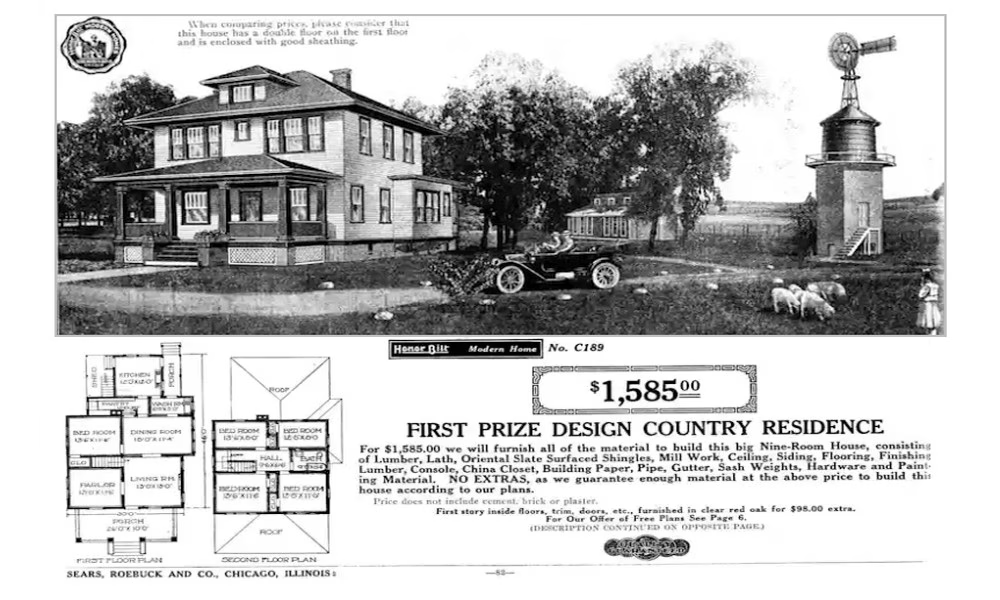
Sears, Roebuck and Co.—a name once synonymous with mail-order catalogs—became a household name not only through its vast selection of consumer goods but also by revolutionizing the way Americans built their homes. The concept of Sears mail-order homes, introduced in the early 20th century, exemplifies innovation in both construction and distribution, leaving an indelible mark on American residential architecture.
A New Frontier in Home Building
During a time when the American Dream was becoming synonymous with homeownership, Sears recognized the burgeoning demand for affordable, quality houses. Instead of traditional home building methods, which often involved long waiting periods and significant local craftsmanship, Sears offered a modular approach. Customers could order a complete house kit from the Sears catalog. These kits came with pre-cut lumber, nails, windows, doors, and even detailed blueprints. The approach was revolutionary: it demystified the process of home construction, making it accessible to a wider range of Americans who might have previously been daunted by the complexity and cost of building a new home.
Efficiency and Affordability
The mail-order model allowed Sears to maintain rigorous quality control and economies of scale. By producing standardized components in a factory setting and then shipping them across the country, Sears was able to offer cost-effective solutions without sacrificing quality. This method streamlined the construction process, significantly reducing the time needed to assemble a home. For many Americans, especially those in rapidly expanding suburban areas, the Sears home represented an efficient pathway to homeownership—a product that could be customized to a degree while still being rooted in the reliability of mass production.
Architectural Innovation and Adaptability
Sears offered a wide array of designs, catering to various tastes and needs. From modest bungalows to larger, more elaborate homes, the catalog featured numerous options that allowed buyers to choose a style that best suited their preferences and budget. This flexibility meant that while the construction process was standardized, the end product could be personalized, reflecting regional styles and individual tastes. The adaptability of Sears mail-order homes is part of why many of these houses, built between 1908 and 1940, still stand today, serving as architectural landmarks in numerous communities across the United States.
Impact on American Society
The influence of Sears mail-order homes extends far beyond mere architectural innovation. These homes played a significant role in democratizing the concept of homeownership at a time when the American economy was rapidly transforming. By offering an accessible route to building one’s own home, Sears contributed to the suburban boom of the mid-20th century. Families who might have been excluded from the traditional housing market found in Sears a viable alternative that supported the growth of stable, long-term communities across the nation.
Furthermore, the mail-order model itself was a precursor to modern consumer behavior. Sears demonstrated how the combination of mail-order catalogs and standardized production could meet the needs of a geographically dispersed market, laying the groundwork for future innovations in both retail and construction industries.
A Legacy That Endures
Today, the story of Sears mail-order homes is more than a historical footnote—it’s a testament to American ingenuity and the drive to innovate in the face of economic and social change. As historians and enthusiasts continue to explore these architectural relics, they remind us that the spirit of innovation often lies in the ability to see beyond traditional boundaries. The legacy of Sears mail-order homes is a powerful example of how the integration of technology, mass production, and creative marketing can reshape society, making the dream of homeownership attainable for millions of Americans.
In revisiting this unique chapter of American history, we not only celebrate the architectural achievements of Sears but also gain insight into a transformative era that redefined the American home and, by extension, the American way of life.




